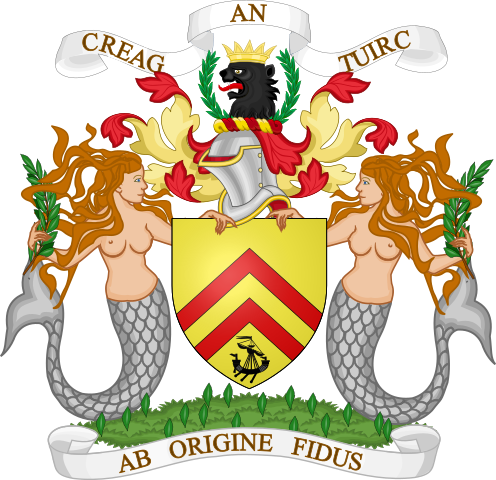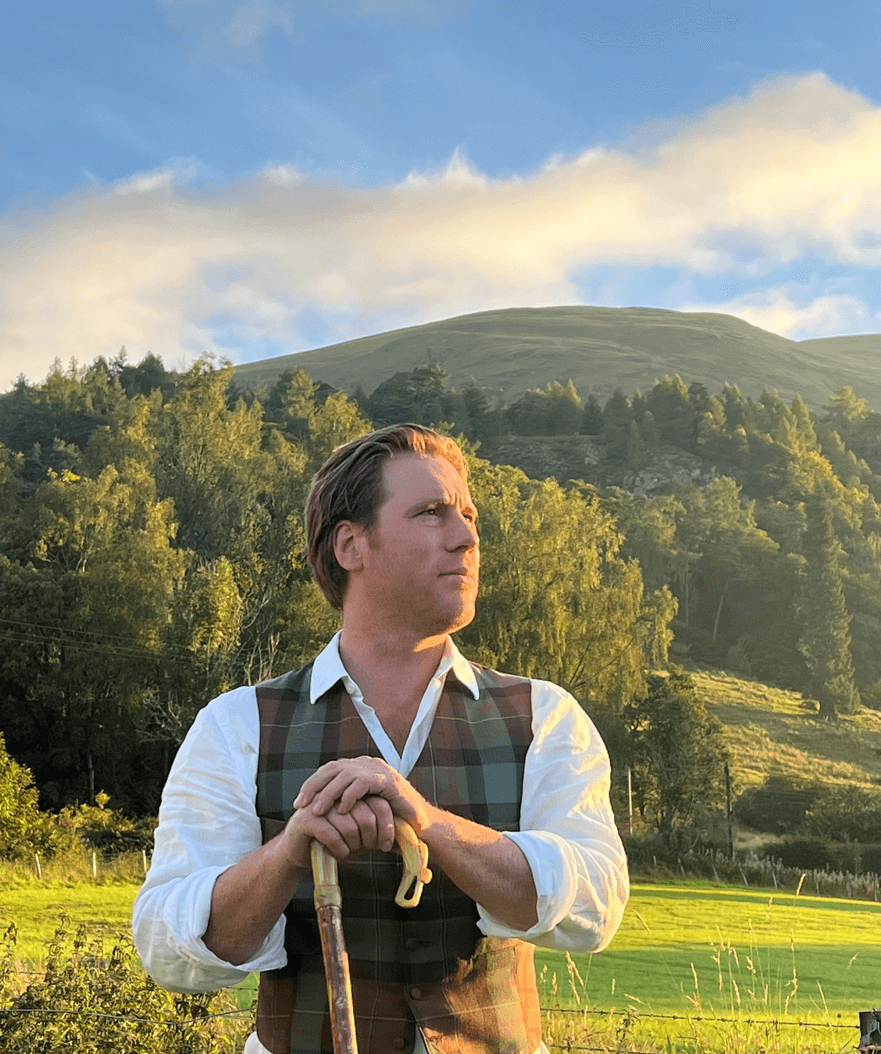Clan MacLaren
It is likely that there are two independent origins of this name. One originates in Perthshire around Balquhidder and the other on the island of Tiree in Argyll.

© wikipedia
The families of Tiree trace their lineage to Lorn, son of Fergus MacErc, founder of the kingdom of Dalriada in the 6th century. In Gaelic they are the Clan Labhruinn. However, the clan's namesake is descended from Laurence, Abbot of Achtow in Balquhidder, who lived there in the 13th century. The lands of the church often belonged to nobles with hereditary titles who also held the title of abbot. Balquhidder was part of the historic Principality of Strathearn, and the coat of arms associated with this district is the mermaid. The MacLaren followers were so connected to the Murray mermaid coat of arms.
In the Ragman Roll of 1296, which listed the Scottish nobles who acknowledged their servitude to Edward I of England, three names are listed that traced back to the clan: Maurice of Tiree, Conan of Balquhidder and Leurin of Ardveche.
The MacLaren probably fought at Bannockburn under the standard of Malise, the Earl of Strathearn. In 1344 the last Celtic Earl of Strathearn was deposed and the MacLarens came under pressure from their more powerful neighbors. Balquhidder came into the hands of the Crown, and in 1490 a stewart was installed as royal steward. In 1500, James IV granted the lordship to his wife, Janet Kennedy, and the MacLaren Chief discovered that his lands were now part of another barony. Balquhidder came into the possession of the Murrays of Atholl.
Later, when the Campbell persecutions of the MacGregors drove them from their own lands to Balquhidder, the MacLaren lacked the power to stop them. The MacGregors plundered the MacLaren lands, bringing death and ruin with them in their wake. The MacLarens appealed to the Campbells to protect them. In return, they demanded that the MacLarens should recognize them as their superior feudal lords. However, the Crown continued to regard the MacLarens as an independent clan and the MacLarens are thus recorded in the Acts of Parliament as oppressed recalcitrant clans in 1587 and 1594.

© wikipedia
The MacLarens fought under Montrose for Charles I's cause at Inverlochy, Auldearn, Alford and Kilsyth. At the end of the century, with the Stuarts again calling for help, the MacLarens united with James Graham of Claverhouse, the Viscount Dundee, who was calling for help for James VII's resistance cause, and followed him to battle at Killiecrankie in 1689.
The MacLaren also fought at the Battle of Sheriffmuir in 1715. They raised their banner for Prince Charles Edward Stuart (Bonnie Prince Charlie), the "Young Pretender" in 1745. The clan followed the Prince from his victories at Prestonpans and Falkirk to the fateful Battle of Culloden in 1746. In this Battle they were on the right side of the battle line with the Appin Regiment under Lord George Murray, brother of the Duke of Atholl. This Gaelic-speaking chieftain, the dashing and romantic Lord George, led the Highlanders in a final major attack that broke the Hanoverian (English) front line. Ultimately, however, this was not enough to win the battle. Donald MacLaren was captured and taken to Edinburgh. Balquhidder was devastated by the English troops. Donald escaped from being taken to Carlisle for questioning by throwing himself down the Devil's Beef Tub near Moffat, a steep slope that none of the redcoats dared to follow. He then lived in hiding in Balquhidder until the amnesty in 1757.

© Clan MacLaren Society
The MacLarens continued to farm in Achtow until 1892. The grandfather of the current clan chief was recognized by Lord Lyon as Mac Laren of Achleskine and Clan Chief of the Mac Laren. He acquired parts of the clan's historic territory, including the interior and heart of the clan, the Creag an Tuirc (the Boar's Rock, Mountain of the Boar). This Creag an Tuirc is also the battle cry of the clan. He died in 1966 and was buried at the old church at Balquhidder.
Today there are three major Mac Laren Clan communities (societies) in Scotland (The Clan MacLaren Society), in North America (Clan MacLaren NA) and Australia (Clan Maclaren AU).
- All links used here lead to external sites. The owner of the relevant page is solely responsible for its content. -